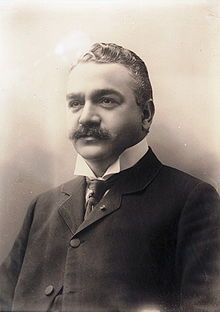The earliest documented raids by the Vikings began in 793 at Lindisfarne, England. The attacks began in 790 and continued until 840. The Vikings used shallow draught longships which were ideally suited for surprise raids on coastal locations that struck terror into their victims. The fleets were small, making a “hit-and-run” tactic of the attacks that could enable the raiders to row away as swiftly as they had come. The attacks were usually seasonal and isolated in small bands.
-----
But this time the fleet that was sighted on the horizon was coming in the year 2013. It was arriving early, but local residents were already at the landing site to welcome the arrival of several tall ships with their crews.The downtown Green Bay, Wisconsin riverfront was lined with people watching nine tall ships with majestic bows and tall masts in full sail glide in one by one from Sturgeon Bay. They were arriving to take part in a weekend festival.
Four tall ships reached port an hour earlier than expected and their arrival was quite a show, entertaining spectators with cannon fire and crew members balancing 60-plus feet in the air while clinging to the masts.
Sixty-thousand people were expected to attend the The Baylake Tall Ship Festival of Green Bay, a three-day festival that began Friday, August 16th. Highlighting the event was a three-masted majestic ship named Sørlandet, “The world’s oldest of the three Norwegian Tall Ships and the oldest full-rigged ship in the world still in operation” according to Adam Stacey, the Sørlandet Program Director. This ship is 210 feet in length, 29 feet wide with masts that reach 112 feet.
---------
For decades, the ship has served as a training vessel for merchant mariners and was the first Norwegian  |
| A crewmember working high in the mast |
The ship became damaged during World War II, where she, among other happenings, served as an accommodation vessel for German submariners. It was used by Germans to accompany their submarines and house Russian prisoners of war. While in action, the ship was partially sunk during the war.
----
The vessel was restored and ready to sail again in 1948. Wind was the only power source until 1958 when she was equipped with an engine. In 1974, she no longer served as a public training vessel, and was sold to a private shipowner and docked at Kilsund for three years, decaying considerably during these years. In 1977 she was bought back to Kristiansand by a shipowner who gave her to the city of Kristiansand. In 1981 a foundation was established "Stiftelsen Fullriggeren Sørlandet" which is now the owner and operator and given the new name Sørlandet.
-------
One of our Vennskap Lodge members, Judy Block is poised to ring the ship’s bell as she tours the famous Norwegian sailing ship in Green Bay. The ship and crew had just completed a boat-race from Chicago to Sturgeon Bay, however no details were available as to the outcome of the race. It has been said that the ship can reach a speed of 14 knots, using the “Iron wind” (engine) or 17 knots by sail.
---
There were several other ships on display at the Festival. The U.S. Brig NIAGARA, a reconstructed vessel made famous by Commodore Oliver Perry’s “DON’T GIVE UP THE SHIP” in the battle of Lake Erie War of 1812.That ship was built as a battleship with cannons.
Another at The Port of Green Bay was THE PEACEMAKER, built in Brazil and later refurbished by a group known as the Twelve Tribes representing The U.S., Canada, Spain and several other countries built to be a training vessel to develope wisdom, friendship, loyalty and good character in young people.
All nine vessels are currently on tour or being used as training institutions for merchant marines while the Sørlandet serves as a “floating classroom” for “Class Afloat”, a program allowing high school juniors and seniors to train abroad the ship and visit ports in North and South America, Africa and Europe.
After touring The Great Lakes ports and attending several festivals featuring the historic ships of the sailing era, the Sørlandet set sail for their return trip to Norway.
Instead of early historic plundering and death, the departure of these modern day Nordlanders was one of friendship and happy associations between the Old Country and The New World. We look forward for the tall ship's return.



















